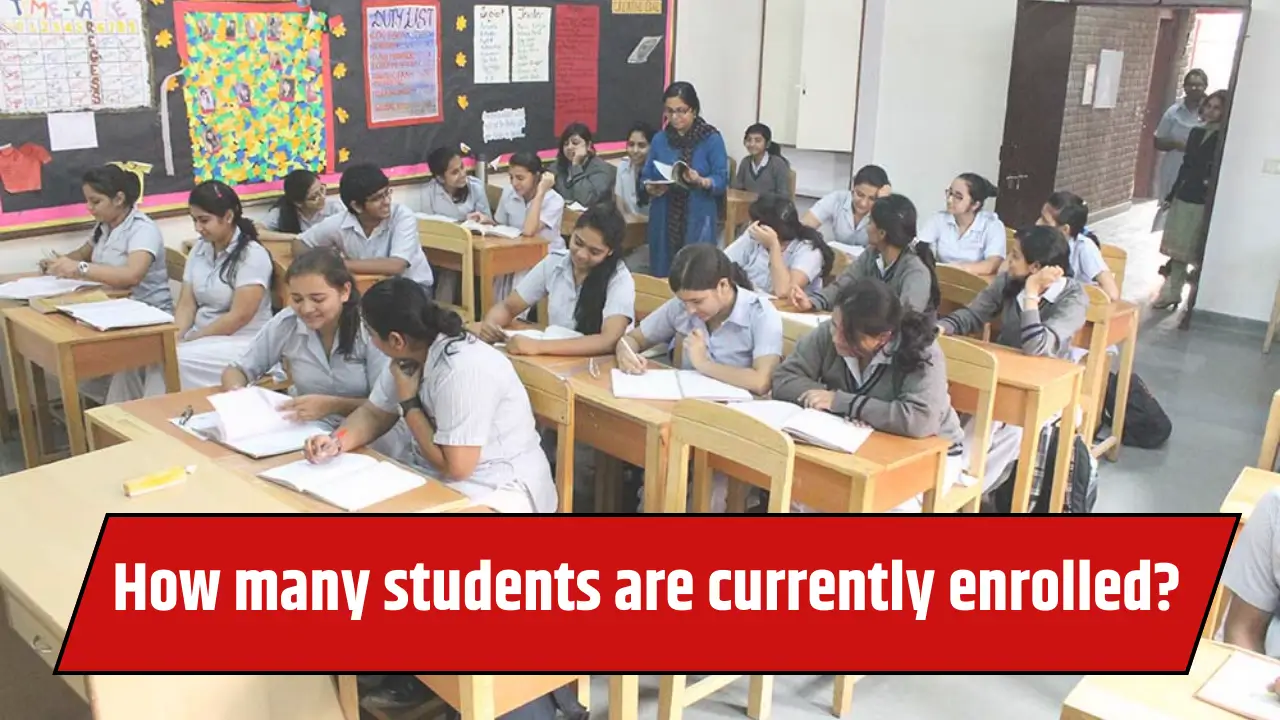Murray Girls High School, located in Wundanyi, Taita Taveta County, Kenya, has established itself as a pillar of excellence in girls’ secondary education within the Coast Region and beyond.
Known for its holistic approach—encompassing strong academics, rich co-curricular activities, and character development—the school plays a vital role in shaping future female leaders. An essential component of understanding the school’s scale, impact, and resources is having a clear perspective on its student enrollment numbers.
Current student enrollment figures tell a story of a vibrant and thriving institution, reflective of its standing in the education sector and its capacity to nurture a large community of motivated learners.
This article offers an in-depth look at the present enrollment status of Murray Girls High School as of 2025, how this number has evolved over time, the distribution of students across various forms, infrastructure considerations, and the implications of this population on academic and social programs.
Overview of Current Enrollment
Total Student Population
As of 2025, Murray Girls High School accommodates approximately 1,000 to 1,200 students. This population reflects the school’s classification as an extra county girls’ boarding secondary school, serving not only students from Taita Taveta County but also from adjacent counties and regions.
This sizable student body highlights the school’s broad appeal and the trust it has garnered among parents and educational stakeholders. It also demonstrates the government’s recognition of Murray Girls High School as an institution capable of handling a large, diverse student population without compromising quality.
Distribution of Students by Grade Level
Murray Girls High School caters to four grade levels—Form 1 through Form 4, corresponding to the four years of Kenya’s secondary education system. The distribution of students is generally balanced, with slight variations reflecting intake numbers, retention rates, and transfers.
| Grade Level (Form) | Approximate Number of Students | Percentage of Total Enrollment |
| Form 1 | 280 – 320 | 25% – 27% |
| Form 2 | 250 – 300 | 23% – 25% |
| Form 3 | 230 – 270 | 20% – 23% |
| Form 4 | 240 – 310 | 22% – 26% |
| Total | 1,000 – 1,200 | 100% |
Insights from Distribution
- Form 1 enrollment is typically the highest, fueled by the annual government placement of primary school graduates.
- Slight attrition in Forms 2 and 3 is usual, often due to transfers, academic performance challenges, or other personal reasons.
- Form 4 enrollment stabilizes or rises again, reflecting the graduation cohort preparing for Kenya Certificate of Secondary Education (KCSE) examinations.
- The retention rate across forms indicates the school’s strong academic support and engagement strategies that maintain student persistence.
Historical Enrollment Trends
Growth Patterns Over Past Decades
Enrollment at Murray Girls High School has demonstrated a positive trajectory over the past twenty years:
- Early 2000s: The school had around 700 to 900 students, reflecting moderate capacity and growing reputation.
- 2010s: Expansion of both facilities and academic programs led to an increase, with enrollment reaching approximately 1,000 students.
- 2020s: Continued investment in infrastructure, digital learning tools, and staff quality has supported current numbers around 1,000 to 1,200 students, with plans to accommodate gradual growth.
Factors Influencing Growth
- Government Initiatives: Programs encouraging girl-child education have increased demand via bursaries, scholarships, and policy support.
- Alumni and Community Support: Fundraising and advocacy efforts have improved facilities and school visibility.
- Academic Reputation: Competitive KCSE results and comprehensive co-curricular offerings have attracted bright students from across county borders.
- Enhanced Boarding Capacity: Properly managed dormitories allow for larger enrollments while maintaining safety and wellbeing.
Infrastructure and Capacity Management
- The school occupies a 38-acre campus, owned since its early years thanks to missionary land donations.
- Facilities include comfortable boarding dormitories, spacious classrooms, science and computer labs, a library, sports grounds, and recreational centers.
- Class sizes are managed to balance between optimal student-teacher ratios and maximizing access.
- Investment in infrastructure continues to anticipate enrollment trends, including upgrading dormitories, laboratories, ICT resources, and classroom technologies.
Impact of Enrollment on Academic and Extracurricular Programs
Academic Benefits from Workforce Size
- Adequate enrollment supports a diverse offering of subjects and electives, essential for meeting national curriculum demands and student interests.
- Large student numbers fund multiple specialized teachers, allowing smaller teaching groups in core and technical subjects.
- A bigger student base encourages the formation of study groups, peer tutoring, and mentorship programs that enhance individual learning experiences.
Enrichment Opportunities
- With higher enrollment, the school sustains a vibrant array of clubs, societies, athletic teams, and competitions across all junior and senior classes.
- These activities cultivate leadership, cooperation, and talents in areas beyond academics, critical for holistic education.
- The school’s prominence and student numbers attract guest speakers, regional contests, and partnerships that further enrich student life.
Recent Developments Addressing Enrollment Challenges (2025)
- Introduction of digital enrollment and administrative systems has simplified admission management, attendance monitoring, and academic record-keeping.
- Counseling and mentorship programs have expanded to accommodate a larger and increasingly diverse student population.
- Special programs target scholarship recipients and at-risk students to improve retention and academic outcomes.
- Hygiene, health, and safety protocols have been reinforced in dormitories and shared spaces to sustain a healthy environment at scale.
- The school collaborates with the County Education Board for equitable distribution of bursaries and resources among enrolled students.
Bulleted Summary: Current Enrollment Highlights at Murray Girls High School
- Current student population ranges between 1,000 and 1,200 girls.
- Enrollment is relatively evenly split among Forms 1 to 4, with minor natural fluctuations.
- From early 2000s figures of under 1,000, enrollment has steadily increased due to expanded facilities and strong reputation.
- The 38-acre campus supports infrastructure suitable for current enrollment levels and planned future expansions.
- Larger enrollment allows for a diverse academic and extracurricular program portfolio.
- Digital management systems and increased student support mitigate challenges related to larger student numbers.
- The school continues to accommodate girls from multiple counties, reflecting broad appeal as an extra-county school.
Conclusion
The steadily increasing enrollment at Murray Girls High School reflects the institution’s position as a premier girls’ boarding secondary school within Kenya’s Coast Region. With a current population of approximately 1,000 to 1,200 students, the school is well positioned to deliver comprehensive, high-quality education and rich extracurricular opportunities.
Strategic infrastructure investments, inclusive support systems, and evolving administration capabilities ensure that this population size translates into positive educational outcomes.
As of 2025, Murray Girls High School balances its vibrant student body with quality learning environments, thus continuing its legacy of empowering young women academically, socially, and personally to become tomorrow’s leaders and changemakers.














